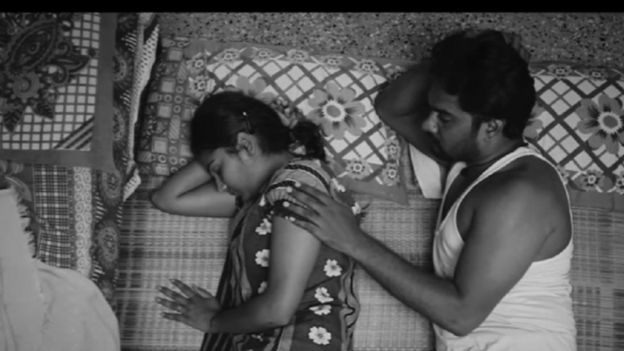Sun Tzu was an ancient Chinese military general, strategist and philosopher, who is believed to have written the famous ancient Chinese book on military strategy, “The Art of War”. Through his legends and the influential “The Art of War”, Sun Tzu had a significant impact on Chinese and Asian history and culture. The book drew immense popularity during the 19th and 20th centuries when the Western Society saw its practical use. This work still has continued its impact on both Asian and Western culture and politics. Sun Tzu’s authenticity is still a question of debate, but the traditional Chinese accounts place him in the Spring and Autumn Period of China (722–481 BC), where he was a military general serving under King Helü of Wu. Based on the description of warfare in “The Art of War” and the striking similarity of the text’s prose to other works from Warring States period led the modern scholars to place the completion of “The Art of War” in the Warring States Period (476–221 BC).
ஈராயிரத்து ஐந்நூறு ஆண்டுகளுக்கு முன்னர், சீனாவில் பல நாடுகள் இருந்தன. அவற்றின் மன்னர்கள் ஒருவருக்கொருவர் போரிட்டுக் கொண்டேயிருந்தனர். அந்த நாடுகளில் ஒன்று வூ என்னும் நாடு. அதன் அண்டை நாடாகிய ச்சூ அதை விட பெரியது. பெரும் படையைக் கொண்டது. வூ படையைவிட பன்மடங்கு பெரியது. அந்த நாட்டிடமிருந்து தன் நாட்டைப் பாதுகாத்துக்கொள்ளத் தக்கதொரு நல்ல படையைப் பெருக்கிக்கொள்ள வூ மன்னன் விரும்பினான்.
அக்காலத்தின் போரியல் மேதையாக ஸுன் ட்ஸூ விளங்கினார். அவர் போர்க்கலை THE ART OF WAR என்னும் நூலை எழுதியுள்ளார். அந்த நூல் தற்காலத்தில் வாணிபம், நிர்வாகம், போரியல் போன்ற பல துறைகளுக்கும் பயன்படுத்தப்படுகிறது.
வூ நாட்டு மன்னனை ஸுன் ட்ஸூ சென்று சந்தித்தார்.
"தளபதிக்குத் திறமையிருந்தால் எந்த மாதிரியான மனிதர்களுக்கும்
போர்ப்பயிற்சி கொடுத்துவிடமுடியும்", என்று ஸுன் ட்ஸூ கூறினார். அந்த சித்தாந்தத்தை விளக்க ஆரம்பித்தார். "நான் உம்முடைய நூலைப் படித்துவிட்டேன். இந்தப் பெண்களுக்குக்கூட உம்முடைய முறைகளின்படி போர்ப்பயிற்சி கொடுக்கமுடியுமா, பாரும்" என்று மன்னன் உத்தரவிட்டான். தன்னுடைய அந்தப்புரத்து சிங்காரிகளுக்குப் போர்ப்பயிற்சி சொல்லிக் கொடுக்கச் சொல்லி சவால்விட்டான்.
அதனை ஏற்றுக்கொண்ட ஸுன் ட்ஸூ மன்னனிடம் சன்னத்துப் பெற்றார்.
படையின் தலைமைத்துவத்தையும் முழுப்பொறுப்பையும் பெற்றுக்கொள்ளும் சடங்கு - சன்னத்துப் பெறுதல். தளபதிக்கு மன்னன் தன் கையால் பரிவட்டம் கட்டி வெற்றிலை பாக்கு கொடுப்பான்.
சில மரபுகளில் தண்டம் ஒன்றை மன்னனிடமிருந்து பெறுவார்கள். 'தண்டு எடுத்தல்' என்ற வழக்கம் அது.
சீனர்களிடமும் இந்த சன்னத்துப் பெறும் மரபு இருந்தது.
மன்னனிடமிருந்து வாள் பெறுவார்கள். அந்த வாளைப் பெற்றபின்னர்
தளபதி இடும் உத்தரவை யாரும் மீறவே முடியாது. மன்னவனும் அதனை
மாற்றமுடியாது.
ஸுன் ட்ஸூ மன்னனின் வாளைக் கேட்டு வாங்கிக்கொண்டார்.
பின்னர் அந்தப்புர சிங்காரிகள் வந்தனர்.
நூற்று எண்பது பெண்கள் கொண்ட அந்தப்புர அழகிகள் கூட்டம் ஒன்று வந்து சேர்ந்தது. அந்தக் கூட்டத்தை இரண்டு பகுதிகளாக ஸுன் ட்ஸூ பிரித்தார்.
அவர்களுக்குத் தலைமையாக மன்னனின் மிகவும் விருப்பமான மிக அழகிய மிக இளமையான வைப்பாட்டிகள்(favourite concubines) இருவரை நியமித்தார்.
பயிற்சி தொடங்கியது.
ஸுன் ட்ஸூ அவர்களை வலது பக்கமாகத் திரும்பச்சொன்னார்
அந்த வைப்பாட்டிகள் சிரித்து, கேலி செய்துகொண்டு விளையாடிக்
கொண்டு சரசமாடிக்கொண்டிருந்தனர். மற்ற சிங்காரிகளும் அவ்வாறு
விளையாடினர்.
ஸுன் ட்ஸூ அவர்களை அழைத்து ஒழுங்காகப் பயிற்சி செய்யச்சொன்னார்.
மீண்டும் வலது பக்கம் திருமச்சொன்னார்.
அவர்கள் தொடர்ந்து விளையாடிக்கொண்டிருந்தனர்.
மற்றவர்களும் அதே மாதிரிதான்.
இரண்டாம் முறை ஸுன் ட்ஸூ அவர்களிடம் இன்னும் நயமாகவும் விரிவாகவும் சொன்னார். சில கவாத்துகளைத் தாமே செய்து காட்டினார்.
பலிக்கவில்லை. வைப்பாட்டிகளும் சிங்காரிகளும் மாறவில்லை.
மூன்றாம் முறை முதலிலிருந்து எல்லா கவாத்தையும் முறையாகச்
செய்து காட்டி, முடிவில் எச்சரிக்கையும் விடுத்தார்.
அப்போதும் அவர்கள் திருந்தவில்லை.
உடனே அங்கிருந்த வீரர்களை அழைத்து அந்த இரண்டு வைப்பாட்டிகளையும் அத்தனை பேர் முன்னிலையிலும் தலையை வெட்டிவிடச்சொன்னார்.
மன்னன் முதலில் விளையாட்டாக நினைத்தான்.
மற்றவர்களும் அப்படியே.
ஆனல் ஸுன் ட்ஸூ வீரர்களிடம் தாம் இட்ட கட்டளையை நிறைவேற்றும் வண்ணம் ஆணையிட்டார்.
மன்னன் வெகுண்டெழுந்து அந்த ஆணையை மாற்றி உத்தரவிட்டான்.
ஸுன் த்ஸூ தம்மிடம் இருந்தார் வாளைத் தூக்கிக் காண்பித்து,
"மன்னவனே! இது உம்முடைய வாள். உம் அதிகாரம் நீதி, வீரம், உறுதி,
வன்மை முதலிய அனைத்திற்கும் இந்த வாள் நிலையாக உள்ளது. அதை நீர் என்னிடம் கொடுத்துவிட்டீர். அத்துடன் அனைத்து அதிகாரத்தையும் என்னிடம் கொடுத்துவிட்டீர்.
அதன்மீது ஆணையிட்டுக் கூறுகிறேன். என் ஆணையில் யார் குறுக்கே
வந்தாலும் - நீரே ஆயினும் சரி - இந்த வாளுக்கு இரையாக்கிவிடுவேன்",
என்றார்.
வெலவெலத்துப் போனார்கள், அனைவரும்.
மன்னன் உட்பட பலர் முன்னிலையிலும் அந்த இரு வைப்பாட்டிகளையும் சிரச்சேதம் செய்தனர்.
புதிய தலைவிகளை ஸுன் ட்ஸூ நியமித்து, பயிற்சியைத் தொடர்ந்தார்.
சில மணி நேரம் சென்று மன்னனை அழைத்து, மேற்பார்க்கச் சொன்னார்.
தன்னுடைய மிக விருப்பமான, மிக அழகிய, மிக இளமையான இரண்டு வைப்பாடிகளை இழந்திருந்த மன்னன் சொன்னான்,
"இப்போது எனக்கு எதையும் மேற்பார்வையிட மூட் இல்லை."
ஸுன் ட்ஸூவின் முதல் மூன்று விதிகள்:
1. நாம் சொல்லவந்ததை நாம் சரியாகச் சொல்லியிருக்க மாட்டோம்.
ஆகவே நாம் சொல்லவந்ததை மீண்டும் விரிவாகச் சொல்ல வேண்டும்.
2.நாம் சொல்ல வந்த விஷயம் புரிந்துகொள்ள முடியாததாக இருக்கலாம். ஆகவே தை மறு பரிசீலனைசெய்து மீண்டும் சொல்லவேண்டும்.
3. சொல்லப்பட்டவர்கள் சற்று தெளிவில்லாதவர்களாக இருக்கலாம்
அவர்கள் பொருட்டு மீண்டும் சொல்லிக்கொடுக்கலாம்.
4. நான்காம் தடவை.......XXX












